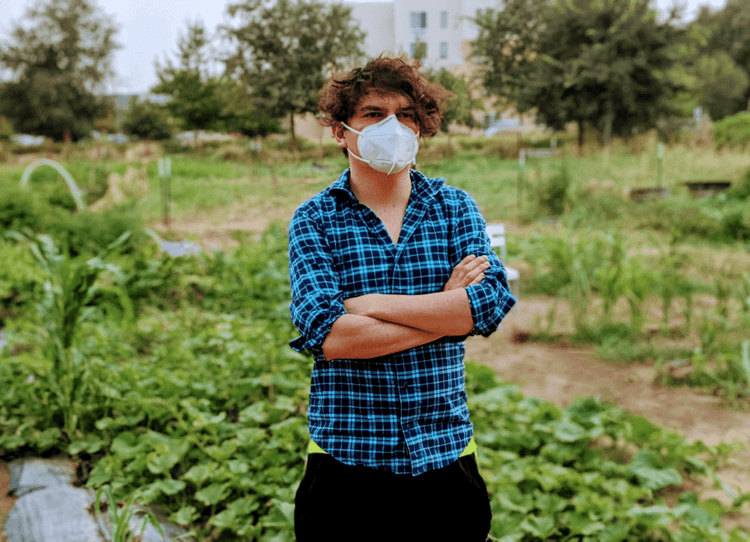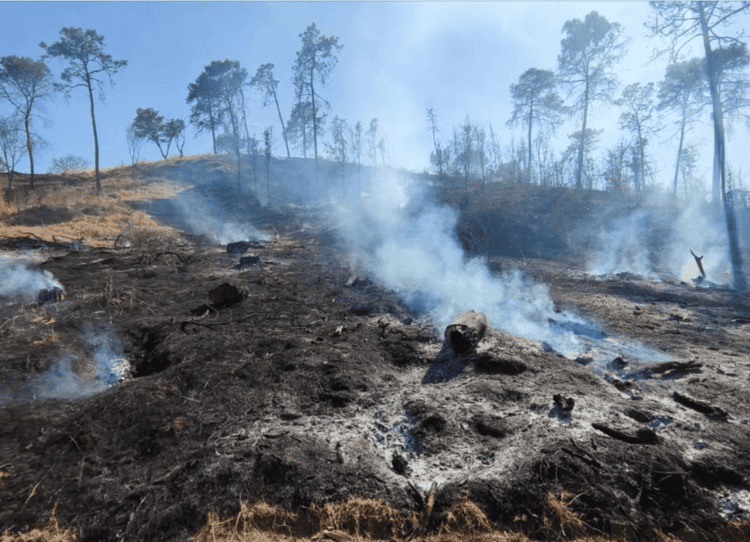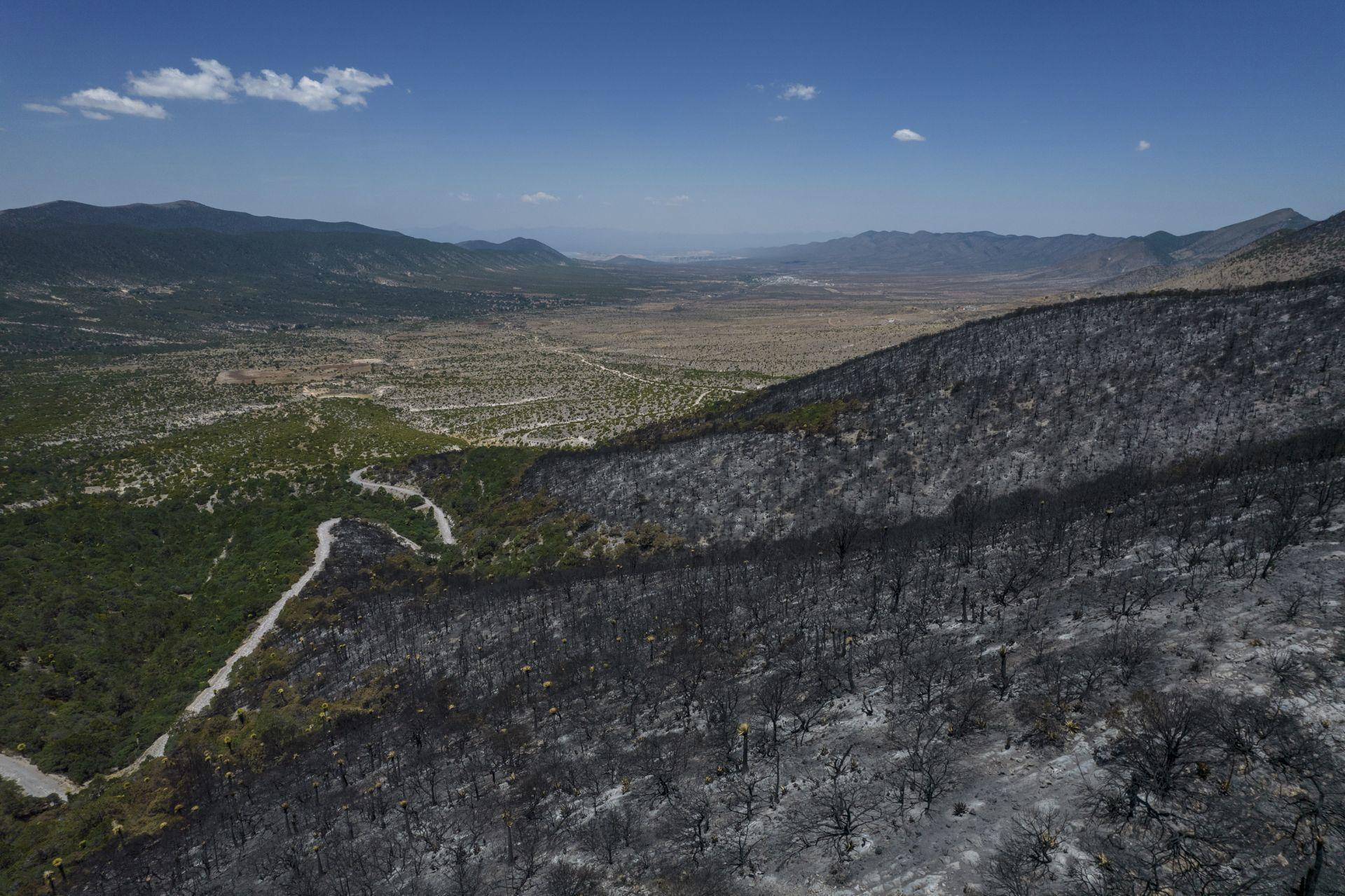Between July 10 and 16, there were at least seven fires burning in California and three of its cities were in the ranking of the most polluted cities in the United States: Thermal, Oasis and Exeter.
Since 2001, Steven Hunter, a meteorologist consultant, warned that fires would increase in number and intensity in California as a result of climate change that causes favorable conditions: less humidity, greater winds and heat in the atmosphere.
According to IQAir, a company dedicated to monitoring air quality indices in the world, in 2022 North America broke a record for the number of massive and long-lasting forest fires, as indicated in the World Air Quality Report.
During the month of July, California experienced the two most intense heat waves of the year, according to the National Weather Service San Diego, which recommends that people stay hydrated, wear light clothing, stay outside for as little time as possible and stay away from the sun's rays.
Systematic inequalities
What looks like a heat wave and isolated fires in California is actually a consequence of climate change, while simple recommendations highlight inequalities between people to deal with it, Bernie Bastién-Olvera, a specialist in global climate change and socioeconomic impacts from the University of California at Davis, told Causa Natura.
He had to experience one of the most critical points in the state of California in 2020 when it was a risk to be away from home due to high levels of air pollution and the contagion of Covid-19.

Bernie Bastién in the midst of a double contingency in California in 2020: the Covid-19 pandemic and air pollution caused by fires. Source: Raiza Pilatowsky
Climate Change 2022: Impacts, Adaptation and Vulnerability, a summary of the sixth evaluation report of the UN Intergovernmental Panel on Climate Change (IPCC), states that climate change is unfair, since the people who have the least responsibility for the climate crisis are the most affected.
This is how Bastién perceived it, when the first thing he noticed was that it was the Latino and Chicana populations who were highly exposed to air pollution from fires and extreme temperatures, since most of them are engaged in agriculture.
“They don't have days off to basically stay home and follow recommendations not to be exposed to high levels of air pollution as happens with fires,” he said.
However, the most surprising inequality was seeing how they sent incarcerated people to risk their lives to fight forest fires.
“The firefighters who were going to put out fires, this highly risky activity, were people incarcerated from California prisons who, again, are Latinos or black people who have been shown to systematically put them in jail for racialization,” he added.
Just this July 11, California reported very low humidity levels, increasingly strong gusts of wind and an increase in heat over the course of the week from July 17 to 23, which keep the threats of wildfires burning.
IQAir points out that the general trend in North America has been towards extreme forest fires whose smoke is mainly composed of polluting particles (PM) that are a major health hazard.
The main health problems associated with exposure to forest fire smoke are irritated eyes, nasal congestion and runny nose, sore throat, headache, difficulty breathing, aggravated asthma, and others.
Although the South Coast Air Quality Management District (AQMD), the regulatory agency responsible for improving air quality in Los Angeles, Orange, Riverside and San Bernardino counties, issued a warning of a possible ozone wave, these are high levels of smog in some areas of California, due to high temperatures, where Latino and Chican communities will continue to work in agricultural fields.
Inequality in Adaptation to Climate Change

Illustrative photograph. Source: Cuartoscuro
In the same way, there are inequalities that are perceived in the acquisition of instruments such as private assets for adaptation to climate change. A clear example of this is a mask, which involves a transaction in the market and helps to reduce exposure to climate risk, Bastién-Olvera said.
“Many of the recommendations relate to personal decisions for which you usually need monetary capital to be able to make them,” he explains.
This also happens with people in street situations who do not have a place to protect themselves from pollution or high temperatures, so those who do not have the resources to cover the basic recommendations are more exposed to atmospheric weather conditions.
This violates their right to a healthy environment where people can develop without exposing their health.
Another important factor to consider, Hunter noted, is California's accelerating population growth, which has caused more and more real estate developments to settle in the woods.
This increases the risk of fires caused by human factors and also highlights the lack of coverage to treat cases in the vast geography of California, making fires larger and more intense.
“In many cases (the fires) are in very remote areas in the forest and it's very difficult to get personnel to reach the site of a fire. Especially in the high mountains of California, for example, without much road access it's very difficult. And that's why it's going to spread faster,” he said.
Faced with this, he pointed out that it is necessary to carefully manage forests and limit settlements in these ecosystems.
For Bastién, this also has a classy reading, since in California it is usually the people with the most economic resources who build their mansions in the woods.
“The interface between forest and urbanity is being pushed harder by people with the most money. They are acting like a fracture of this area and then they are making them more exposed to fires and then their house burns down, but they do have insurance that pays for their house without problem, but let's say they have already opened that path for more people to arrive who don't have that insurance or that capital,” he said.
“It's a human conflict between the economy and capitalism,” Hunter summarized it.
Carbon taxes

Illustrative image. Source: Alejandro Rodríguez /Cuartoscano
Currently, there is no recognition of the total costs of climate change to society because it is difficult to measure, Bastién-Olivera said, making it difficult to make visible who is assuming these costs and achieving environmental justice.
This is because many of the costs are not monetary, that is, they have no associated market value, such as the health effects experienced by Latino and Chican communities in agricultural fields.
The fairest way to quantify the environmental costs of climate change is to add the value of what is being lost due to the effects of climate change, plus the environmental services of nature and the value of non-use.
However, the closest thing we have come to is to establishing the social cost of carbon, that is, how much it costs to emit one ton of carbon dioxide into the atmosphere, which could serve as a carbon tax that all people and/or companies should pay, as a measure to discourage the burning of fossil fuel gas and oil, the main source of carbon.
Every government should establish, based on scientific information, the value of one ton of carbon dioxide to make decisions based on that information.
In the case of the United States, the Environmental Protection Agency (EPA) is currently reevaluating that cost. Bastién-Olvera pointed out that among the scientific community, a ton of carbon dioxide has been valued at 190 dollars.
These carbon taxes could be implemented without neglecting the need to also serve the population that is being directly affected, so, according to Bastién-Olvera, it is also necessary to include labor rights as part of climate justice.
For example, that those who work can request days off to reduce their exposure to pollution or extreme climates, in this way, a labor right also becomes a necessary adaptation to climate change.



Comentarios (0)